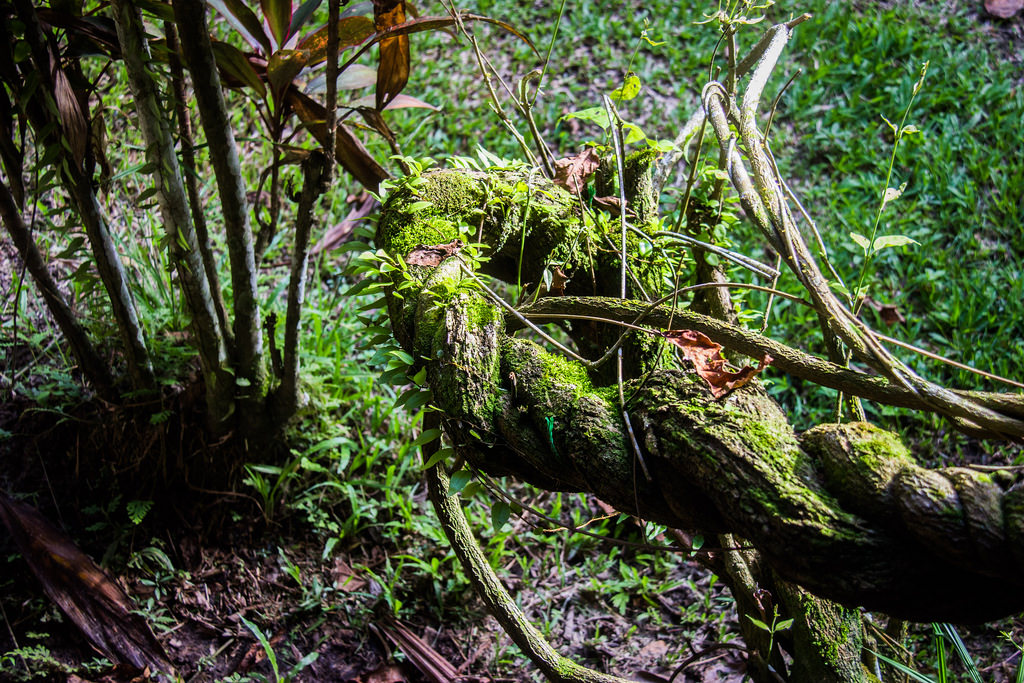Indigenous usage and knowledge of psychedelic and other hallucinogen plants as medicine and its socio-cultural values.
I would like to understand better the socio-cultural practices embedded in the medicinal use of psychedellic and hallucinogenic plants among Indigenous peoples. Because nowadays there is a fashion/tourist trend of Ayahuasca (a psychedelic Amazonian beverage) consumption across the world and in South America, I am interested in understanding the socio-cultural character of medicines such Ayahuasca in order to defetishize its consumption show their traditional importance. I might manage to draw some information about the brotherhood, shared understanding, and ancestral knowledge of medicinal plants from some medicine men/women in the Americas.

Ayahuasca Vine. By Paul Hessell 17 May 2015. Flickr, via Creative Commons.
Nowadays, the perspective towards Ayahuasca within the scientific community is quite positive and in the mean time, controversial. Some scholars claim that Ayahuasca’s power only relies on its “alkaloid constituents such as DMT,” which is mainly present in one of its component plants called Ayahuasca (Tupper & Labate, 2014, p. 74). That would mean dismissal of other plants that constitute the traditional beverage. On the other hand, some scholars argue that the context itself where the beverage is consumed is an important factor for its effectiveness. The traditional context involves singing medicine songs, telling stories, and sharing ancestral ‘mysteries.’ But what is consistent in the scientific community are the findings of the studies conducted on Ayahuasca to date. It has proved to have positive effects on its consumers’ psychological and physical health, and increased immunological response, among others. Overall, it is also outstanding that given its addictive potential due to its psychedelic properties, there has been no case of addiction found so far (Tupper & Labate, 2014).
Beverages such as Ayahuasca are used by many Indigenous medicine men/women in South America as “a cognitive tool” to sharpen their perceptions and understanding, which then are shared with the ceremony participants (Tupper & Labate, 2014, p. 76). Each type of beverage or medicine has its own potential and specific uses and knowledge, though many of them can overlap on their usage, and are representative of certain Indigenous groups in particular. Medicine plants such as Peyote, Tobacco, Mushrooms, and Floripondio, to name a few, are generally well known among indigenous peoples in South America.
I have heard that there is an alliance among Indigenous peoples from the Americas. That alliance is based, I guess, on an old prophecy that foretold a meeting of the Eagle from the North and the Condor from the South. As I know, medicine plants have played an important role in the continuation of that prophecy and the alliance among these communities. That would mean that medicine plants’ influence goes far beyond that what is acknowledged by the orthodox scientific community. Thus, I will draw information about the use of sacred plants from scientific studies and from medicine men/women. I will try to orchestrate these voices in order to show the contemporary status of sacred plants among Indigenous peoples and Western science.
Sources and References:
Tupper, K. W., & Labate, B. C. (2014). Ayahuasca, psychedelic studies and health sciences: The politics of knowledge and inquiry into an Amazonian plant brew. Current Drug Abuse Reviews, 7(2), 71-80.
Picture retrieved from https://www.flickr.com/photos/brindle95/17776812976/in/photostream/
 Follow
Follow